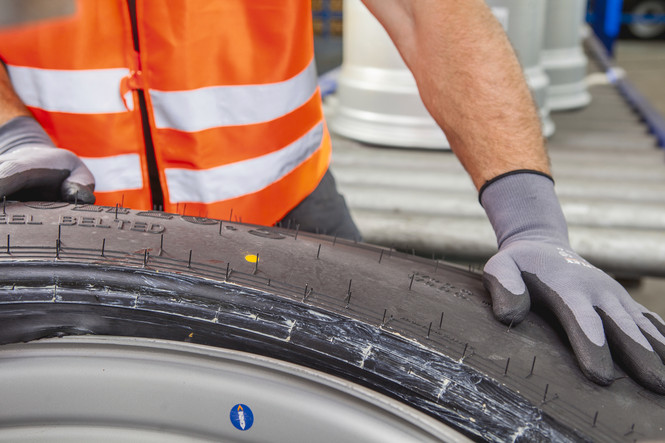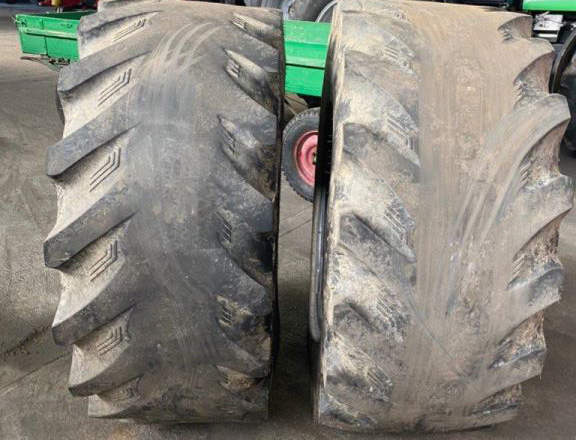Instead of fitting new tyres or wheels, the first thing to do is to investigate the cause. Because in many cases, the jumping, swaying or bouncing vehicle can be controlled by adjusting the air pressure. Much rarer is a faulty wheel assembly, but in that case the tyre has to be remounted onto the rim. New wheels, on the other hand, are only required if they do not match the machine's performance class or if the material is fatigued.

- A pronounced radial runout of the wheel can best be recognised on the moving machine from the outside. The tyre and rim have a high and low point within their manufacturing tolerance. When both high points have been mounted on top of each other, the millimeter-sized manufacturing tolerances add up to a visible deflection. Remounting at an offset of 180° usually improves the running smoothness significantly.
- If uneven running is building up while driving, this is often caused by too low tyre pressures.

- Wear profile: One-sided signs of wear at the shoulders or towards the centre indicate that the air pressure has been permanently set incorrectly.
- "Flat spots": after longer periods of inactivity, tyres may show uneven running behaviour. The so-called "flat spot" will even itself out over time.
- Characteristic curves: if the fine characteristic curves along the tyre sidewall are not uniformly concentric with the rim flange, there is a risk of serious material damage. The tyre must be remounted onto the rim again.

![[Translate to English:] [Translate to English:]](/fileadmin/_processed_/f/e/csm_Werkstatttipp_Fahrverhalten_22df3efce9.jpg)